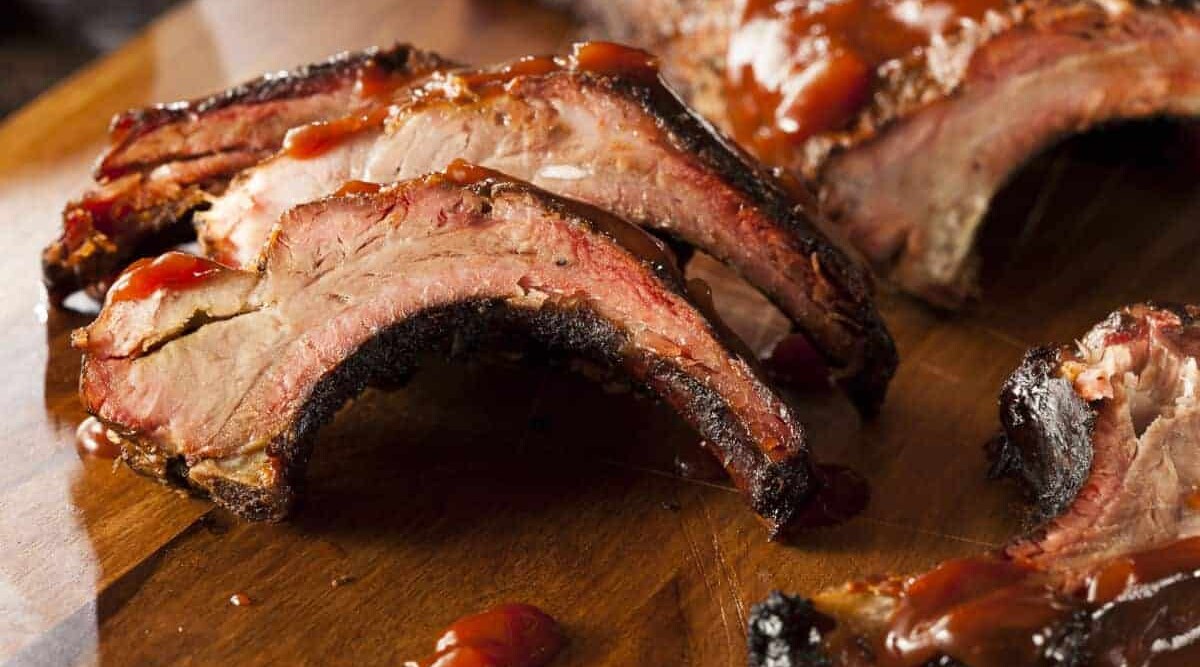
I’m sure you’re familiar with KFC’s famous slogan “Finger lickin’ good”?
But, seriously, would you rather lick your fingers after eating greasy fried chicken, or ribs smothered with irresistible gooey sauce?
If you’re a fan of ribs, there’s nothing better looking than carmine colored ribs with that glossy coating. The aroma of smoky meat that is fork-tender but does not fall off the bone.
Wouldn’t it be nice if your ribs came out this perfect every time?
Unfortunately, what usually happens to most of us is the pork rib nightmare. You get ready to serve your ribs only to discover they are charred, tough and chewy like an indestructible dog toy. It can be downright demoralizing and embarrassing.
Luckily, you’ve found this article where we’re going to discuss the 3-2-1 rib method, so you will never serve a tough, dry or burned rib ever again! You will get perfect ribs every time and look like a pro to your friends and family.
Always do barbecue right; this will gratify some people and astonish the rest
— Mark Twain (with some added poetic license!)
Step-by-Step: The 3-2-1 Ribs Method of Cooking Ribs
There are endless varieties of “secret” techniques and cooking methods when it comes to smoking ribs. If you are new to the barbecue rib scene, it can seem daunting to find a method that works consistently.
That’s why the 3-2-1 Method has become so popular. It is a simple, almost fool-proof technique that works for anyone. Nevertheless, it still leaves room to make them your own by adding grandpa’s secret rub or grandma’s favorite sauce.
Let 100 backyard chefs use this method, and each rib will be as tender and juicy as the next. The amazing thing is that every rack will be unique with 100 different flavors customized with rubs, sauces, and other variations.
Here is What the 3-2-1 in the Method Stands For
3 hours of smoking — unwrapped.
2 hours of cooking — wrapped in foil.
1 hour of cooking unwrapped to finish and add sauce.
And for the finer details, here’s EXACTLY how to use this technique.
The First Three Hours
The first three hours is the time you let the ribs bathe in the smoke, letting the ribs absorb all that smoky goodness and take on the flavor. Choose a suitable flavor from our guide to the best woods for smoking ribs.
Of course, you will have applied your favorite rub to begin your masterpiece and put the ribs on your grill or smoker away from direct heat.
And you want to keep the indirect cooking temperature close to 225 °F or 107 °C.
If this were a traditional cooking method, you would babysit your ribs and fire tend for the next six hours. But not with the 3-2-1 ribs method, because you start with a three-hour break.
Once your ribs are on, just be sure to keep an occasional watch on the fire to make sure it’s not too hot or too cold. Using a remote digital thermometer is the perfect tool for the job. And now it’s time to enjoy some beer and football.
When you cook under pressure, you trade perfection. — Gordon Ramsay
The (Controversial) Next Two Hours
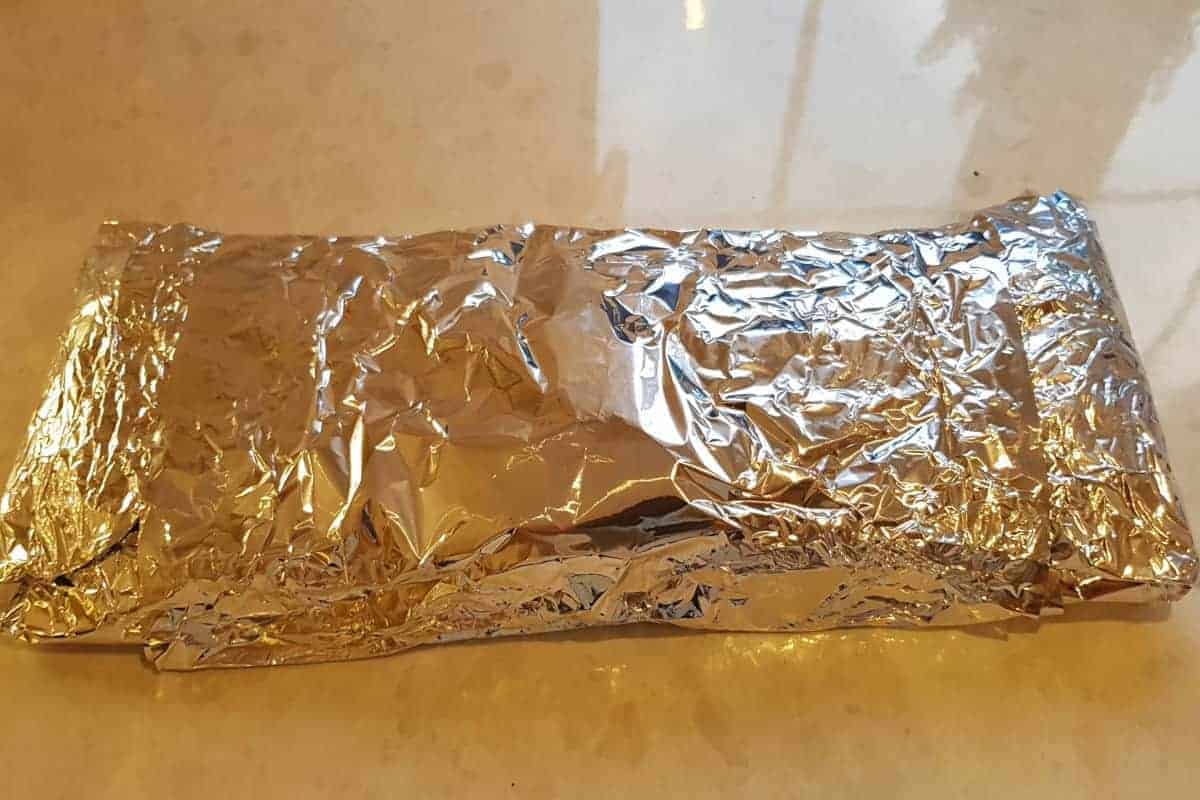
During this stage, you will wrap your ribs in foil and therein lies the controversy. But we’ll get back to that in a moment.
You can add more seasoning or sauce if you like. The important thing is to wrap your ribs in aluminum foil tightly to seal in the juices. Some folks add a shot of water, fruit juice, or apple cider for added moisture.
Make sure you use two layers of heavy-duty foil and wrap the ribs bones side up, so it’s easier for you to wrap them without piercing the foil.
Once wrapped, put them back in your smoker at 225 °F or 107 °C for another two hours. And you’ve now earned a further two-hour break!
Why Did We Say 2 Hours Wrapped is Controversial?
Hardcore BBQ rib purists live for that crusty bark on ribs on the outside of slow-cooked ribs. They look for tender meat that is slightly chewy but not sliding off the bone.
Wrapping ribs in foil with a liquid is essentially boiling or steaming the meat. You are slow cooking at 225 °F or 107 °C, but water boils at 212 °F or 100 °C, which means you’re steaming the meat.
Although it will make the meat tender, you do lose the bark or crust on the outside. Some people say it makes the meat mushy and loses some of its smoky flavor.
This foil wrapping technique has a name, “the Texas Crutch.” Competition pitmasters use this technique all the time to ensure their ribs are tender in time for judging. Not only that, but the “Texas Crutch” is a fairly simple way for anyone to make moist and tender ribs.
Now, let’s look at the last hour…
Anything worth doing is worth doing slowly
— Mae West
The Final Hour, Be Careful
This is the last hour of your six-hour rib cooking time. You will unwrap the ribs, place them back on the smoker, and finish cooking them while frequently basting with your great-granddad’s secret sauce (or the one you bought from the store).
This is the critical time when you can make or break your perfect ribs. You’ll need to keep checking and make sure you take them off at just the right time, and that they don’t overcook.
The goal here is to dry the bark — and the meat — slightly. It’s a time to add some final smoke, and to slather on a few coats of sauce, so you can “lick your fingers good.” (I don’t want to step on any trademarked phrases here.)
Are the Ribs Done?
There are several ways to check if your ribs are cooked to perfection, but these next two methods are my favorites. They’re less invasive and won’t ruin your ribs.
The Toothpick Method
Like testing a cake for doneness, you will stick a toothpick in the center of the meat between the ribs. If it goes in real nice and easy, they’re done. It means the collagen has turned to gelatin and everything is nice and tender. Check two or three spots to be sure, and you won’t ruin the meat.
If you are new to cooking ribs, try poking raw ribs with a toothpick before you start cooking to see the difference. (Don’t use the same toothpick in the cooked ribs, of course!)
The Twist Test
Grab one of the center bones and gently twist it. If it starts to break free from the meat, it’s time to eat. If the meat doesn’t move, keep cooking.
Other Methods of Checking for Doneness
These can ruin your presentation so are best avoided. The methods such as:
- The Bend Test — Pick up the slab with tongs to see if the meat starts to crack in the middle. If the meat is overcooked, you could end up with a pile of meat and bones.
- The Pop-Up test — Some say that if the meat shrinks away from the ends of the bones, the ribs are ready. However, it’s not a reliable test because the smoker may be too hot and the meat shrunk prematurely.
- The Taste Test (or the Peek-A-Boo Test) — It’s OK to cut into the ribs to see if they’re done when you are by yourself, but honestly, would you cut into a steak and then serve it to someone else?
The Meat Should Not Fall Off the Bone!
Because the steam can cook the collagen faster than dry heat, your meat can become overcooked to a point where it falls off the bone. Rib enthusiasts everywhere will tell you a good rib keeps the meat on the bone and will not have a mushy texture when you bite it.
Keep an eye on the heat all through the cooking process. Once you take your ribs out of the foil, check to see how well the meat is holding on to the bone.
You may have to cut back on the last cooking hour if they are starting to get too loose. Otherwise, you’ve just made an expensive pulled pork.
Four Final Tips for Success
If you are relatively new to smoking and cooking barbecue ribs, the 3-2-1 method is a good place to start. But before you fire up that grill, you want to remember these basic tips to make your ribs the best they can be.
1. Remove the Membrane
After you bring your ribs home from the butcher, be sure to remove the membrane surrounding the ribs. No amount of cooking will make it tender, and it will prevent your smoke and spices from getting deeper into the meat.
Here’s a quick video to show you how to remove the membrane using a paper towel.
2. Don’t Over Salt!
Meat that is labeled “enhanced,” “flavor enhanced,””self-basting,” “basted” or ‘Kosher” has been injected with a salt brine. If you use a rub on brined or kosher meats, leave out the salt, it’s already in there!
3. Maintain a Consistent Temperature
Maintain 225 °F. (110 °C.) inside your cooker for the first 5 hours.
4. Wrap Tightly — No Gaps!
Wrap the ribs, bone side up and seal them airtight, making sure the bones do not pierce the foil, otherwise moisture and heat escapes and the ribs are as effectively unwrapped.
Can You Grill 3-2-1 Ribs in any BBQ or Smoker?
The short answer is yes, in all types including a Bullet smoker, Kamado, UDS or an Offset smoker.
Just be sure the grill is large enough to close without tearing the foil, and the meat is not directly over the coals. Other than that, you cook your ribs the same way as you would without the foil.
Make Sure to Buy Quality Ribs
Before we talk about 3-2-1 ribs, let’s talk about your meat. Pork ribs that is.
If you want the best barbecued ribs, then buy the best quality ribs because no cooking technique or secret sauce will transform inferior quality meat into award-winning ribs.
Most of us have no option other than to buy pre-cut ribs. But, if you can buy from a butcher, it’s the best way to go.
No matter where you source your ribs, here are a few tips when buying:
Don’t buy:
- Meat that is browned or slimy
- Broken ribs (“shiners”) where the bone breaks through the meat
- Avoid skinny ribs that are mostly bone
- Can you smell the meat even through the packaging? Run away!
Do buy:
- Ribs with plenty of meat and marbling (fat)
- The meat should be bright pink and firm
- Choose whole racks with 11 to 14 ribs
There are a few different types of pork ribs, but mostly people buy spareribs or baby back ribs.
Spareribs have only the meat that grew while the hog was alive, not varied depending on the butchers cut, what they decide to trim away.
Baby back ribs come from the loin, and the butcher controls the thickness of the meat, depending on how much they decide to leave on.
If you can buy from a butcher, ask him to custom cut the baby back ribs off the rib roast and leave some extra meat on them. The extra meat on each glorious rib is worth the few extra bucks you’ll pay.
For more info on how the different types of pork ribs compare to each other, check out the following articles on spare ribs vs baby back, spare ribs vs St Louis, and baby back vs St Louis ribs, where we answer all the questions you could possibly ever have on pork rib comparisons.
A Word About Rubs and Sauces
Everyone has their favorite rub or sauce, and there are an infinite variety of combinations. Some go to the trouble of carefully measuring and preparing ingredients to make their own rubs, or cooking sauces from scratch. Others take their favorite store bought rub or sauce and gussy it up to make it their own.
Our advice is to try as many combinations as you can. The important thing is to write down exactly what you used, how much you used and when you used it each time, together with how you found the result and what you would likely change next time.
This way, you can refer to your previous notes before your current cook, and progressively tweak your way to perfection over time.
You may have to eat ribs every other day for a year to get just the right combination you like. We know, it’s a dirty job, but someone has to do it. And if you do end up cooking more than you eat while experimenting and comparing, you can always store and reheat your ribs later.
The 3-2-1 Method Works Every Time
If your barbecue style is more laid back and flexible, then the 3-2-1 method is for you, including the ‘Texas Crutch’ (wrapping your ribs in foil) as a fool-proof way to keep your ribs moist and tender.
Just follow the tips above, watch your temperature, and you’ll have everyone talking about how you should join the next rib competition.
Would you do us a favor? Send us the results of your experiments. We might like to share your favorite rub, sauce, ingredients and techniques with our Facebook page.
And if you found this article useful, please share it.
Happy grilling!


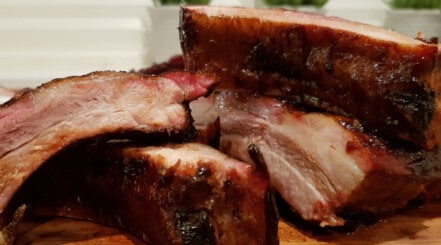

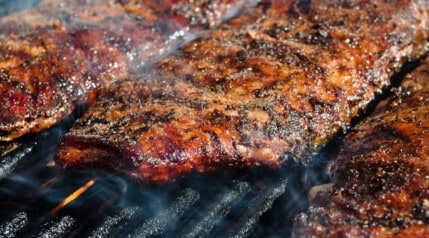
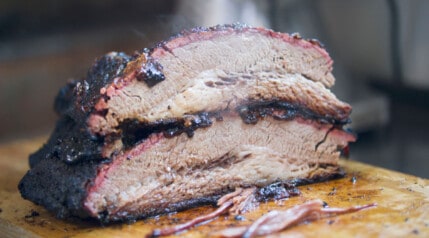
In your article when you address if you can use a smoker or BBQ, if I use a smoker, do I still wrap them in step 2?
Hi Rachel,
Yes, you would still wrap if you wish to follow the 3-2-1 method. It’s independent of what device you choose to cook on, the method stays the same.
Also, is this best on a smoker or grill?
Hi Rachel,
You can get great results on either/both, because you can use a grill as a smoker if you have the know how. What’s important is hitting and maintaining the right temp and keeping the temp stable, and adding a lick of smoke for the first 3-hour stage. You can do this on pretty much all outdoor cooking devices, almost any grill or smoker. If you have a dedicated smoker though, usually it’s easier to achieve more consistent results, but a grill will suffice if you can manage it effectively!
My Traeger reads 225 at the probe on the right side of the cooker, where the ribs lay at grill height the temperature is 250. Should I dial my cooker down, so the ambient temperature at the grill surface is 225?
What do you think about using pink butcher paper instead of foil?
Hi Doug,
The bark you get when using paper vs foil is far better IMO. Wrapping in foil somewhat ruins a bark by softening it hugely, whereas paper does soften it, but not nearly as much. I guess it can be a matter of personal preference, how you like the finished product.
Personally, whatever I’m cooking, if I’m wrapping but not adding any liquid then I always use pink butcher paper. If I’m adding liquid, then I always use foil.
Hi Doug, you say that the last hour you should “crank up the heat”. I can’t seem to find what temperature you suggest that should be….
Hi Sarah.
No, don’t do that. It’s something I used to do years ago but no longer do. They are best if the smoker is kept between 225 and 250 for the entire duration of the cook. I’ve just edited the article to reflect this.
Thank you it was very interesting information.
I can’t wait to get smoking.
So as a SUPER Newbie, who does a lot of research, which usually gets me in more trouble than I like to admit I have a question about wrapping in foil. I have seen several articles about wrapping in Peach butcher paper which allows the smoke to continue to get through. With the 3-2-1 method for ribs is the foil more to lock in the moisture and keep the ribs tender? And if yes is there a general, this is when to use butcher paper?? Thanks, in advance for any help!!
Hi Tim. Can I direct you to read this section of my brisket wrapping article, that discusses the differences between not wrapping, using foil and using butcher paper? (I’m not being lazy, it’s just a lot to say, and I’ve already written it elsewhere :-)): To Wrap or Not to Wrap? Bare, Foil or Pink Butcher Paper
That should answer your question(s). If not, come back and drop any questions you still have, I’ll then answer more fully.
Hi Mark,
I’ve done this method twice with great results using St Louis Style ribs. On the 2-hour rap phase we used about 3/4-1 cup of apple juice and a shot of bourbon, then back on the grill meat side down. Juicy and very tasty. Enjoyed your article.
Love the addition of bourbon! My favorite homemade bacon is a maple syrup and bourbon cure, very tasty indeed!
Put my homemade file cabinet smoker through its first test today; smoked baby backs using your recommended 3-2-1 technique. I’m still learning my smokers idiosyncrasies such as temperature regulation, air flow into the fire box and smoke dampening. But we all thought the ribs were tender and smoky-licious. Thanks, for giving newbies like myself the know how to face smoking ribs with confidence. Grill On, Mark!
Hi Terry. Love the sound of a filing cabinet smoker! I’ve seen a few DIY jobs like this, very resourceful, good work. I’m glad the ribs turned out well.
Works great everytime! I really like and recommend your site to everyone you really nailed in every way. Thanks from Arizona
Thanks, Rikinaz.
hi! i need to cook the ribs a day before I serve them. how would you recommend I do that? what step should I stop at? and what is your recommendation for reheating? thank you!
Hi Emily,
I would fully cook them, then follow the tips for storing and reheating here: How to reheat ribs.
I’ve recently learned that the 3-2-1 method is almost fool proof. I brine my ribs overnight in apple juice, beer with Chinese five spice, kosher salt and brown sugar. After some experimenting, I add honey, brown sugar and beer to the foil before tenting.
Perfect ribs every single time. Love it.
Used you information to make St. Louis ribs yesterday July 8. My wife thinks I am a master! Did them on a BGE with cherry wood, super yummy, thank you!